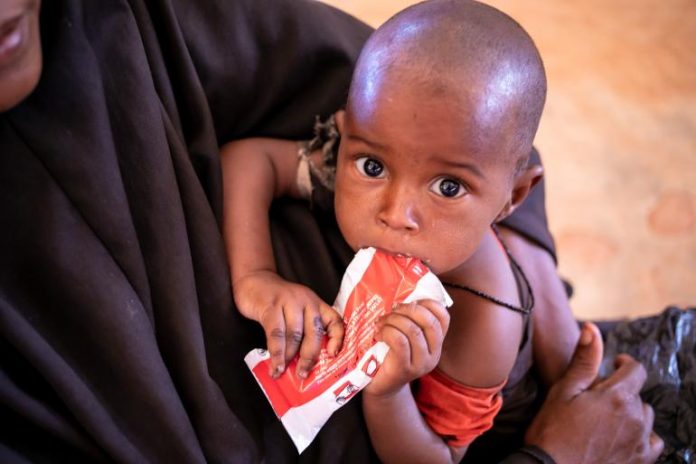Mogadishu Somalia
Somali Magazine— Somalia is the Horn of Africa’s most drought-stricken country. This is the third and worst drought in the last ten years. The situation is alarming and getting worse. Somalia’s isolated locations, particularly villages and communities in the central and southern regions, are the hardest hit. In the expectation that the situation may improve in larger cities and towns, the elderly, women, and children go on the long and arduous journey there in search of any assistance.
Where I grew up, there were issues and hunger. Hunger is the only thing that exists. People are hungry, and while health is vital, they are also hungry. There isn’t any rain. We set off in search of treatment, but there is a lack of food. “There is no rain,” Fadumo Ali Mohamed declares.
Faduumo traveled from her hamlet near Jamame, spending two nights on the road with her three children, one of whom was critically ill. Moving in and out of territory controlled by the government or armed groups was a difficult task. This brings its own set of issues, but the cost of travel in the current “drought economy” is likely to be the first roadblock for potential patients.
“Previously, 75% of the patients were from rural communities. The majority of the patients are now from Kismayo. Because they had their crops and animals, and there was no drought, they could afford transportation to the hospital. They can no longer afford to get to the hospital. As a result, sick children have remained in the community, and only the most seriously ill have been brought in. “Some of them have told us that their children have perished owing to a shortage of transportation,” says Feisal Adan Ibrahim, who oversees operations at Kismayo General Hospital’s stabilization department.
Malnutrition and measles cases are on the rise, and people require medical assistance.
Ikraan Abdiaziz, Faadumo Ali Mohamed’s two-year-old daughter, was admitted to the Kismayo stabilization center in February. Her tiny frame was puffed up by oedema, or fluid retention in the body, and she was extremely malnourished.
My daughter was swollen when I brought her here. I’m staying with her while she receives medical attention. “She’s still fatigued, but the swelling isn’t as bad as it was,” Faadumo says as she sits with her daughter in the stabilization center’s ICU wing.
The majority of patients at the stabilization facilities are from displaced families who have settled in and near towns, while others come from rural areas.
“We’ve noticed a significant increase in the number of persons visiting the stabilization center. We are observing an increase in the number of malnourished children. But our greatest concern, based on reports, is that the situation in rural areas is even worse, with no access to health care. “Right now, that’s our biggest concern,” says Mohamed Abdi Dagane, a member of the International Committee of the Red Cross (ICRC) team in Kismayo.
The problem is exacerbated by the growing number of displacement camps springing up around the towns as a result of the present drought. In these settlements, food, water, health, and sanitation services are in short supply. Since January, there have been around 120,000 additional arrivals in the camps in Mogadishu, Somalia’s capital. Overall, healthcare access in Somalia is still very restricted, particularly in rural regions, making the severity of the malnutrition crisis difficult to assess.
The prolonged drought is expected to cause acute malnutrition among 1.4 million children, roughly half of Somalia’s under five population, according to humanitarian agencies tasked to help children. The ICRC supports both Kismayo and Baidoa stabilization facilities, as well as 16 Somali Red Crescent Society (SRCS) clinics that provide food assistance to families in need.

